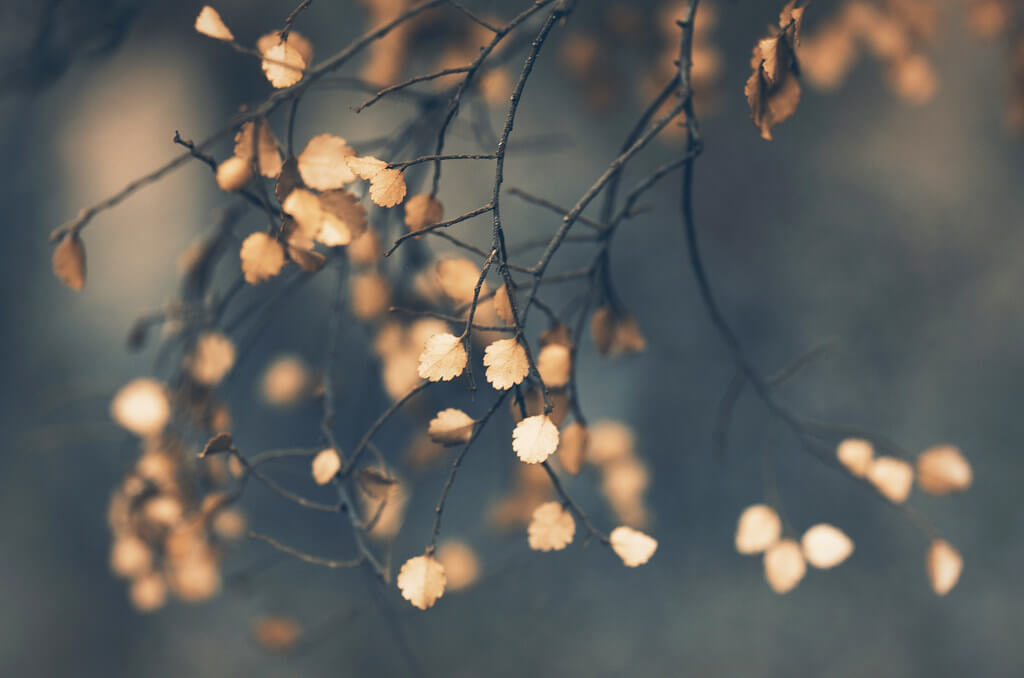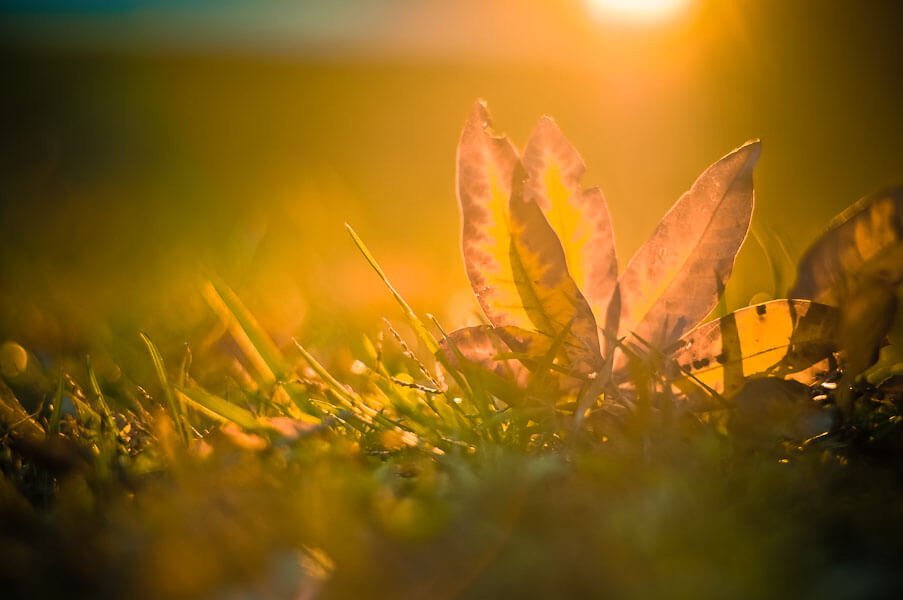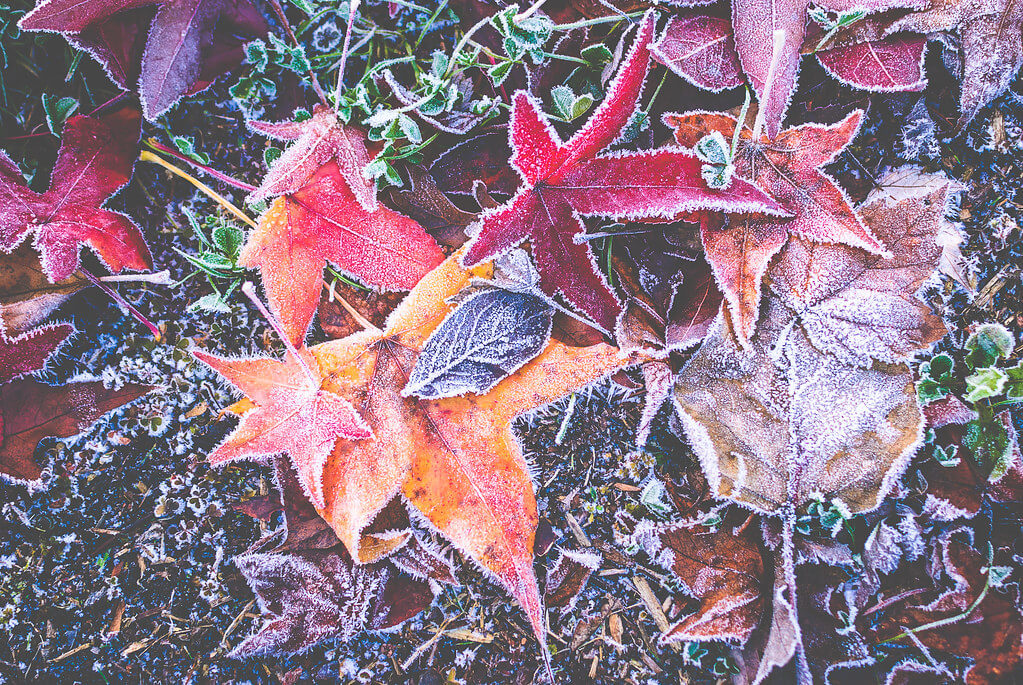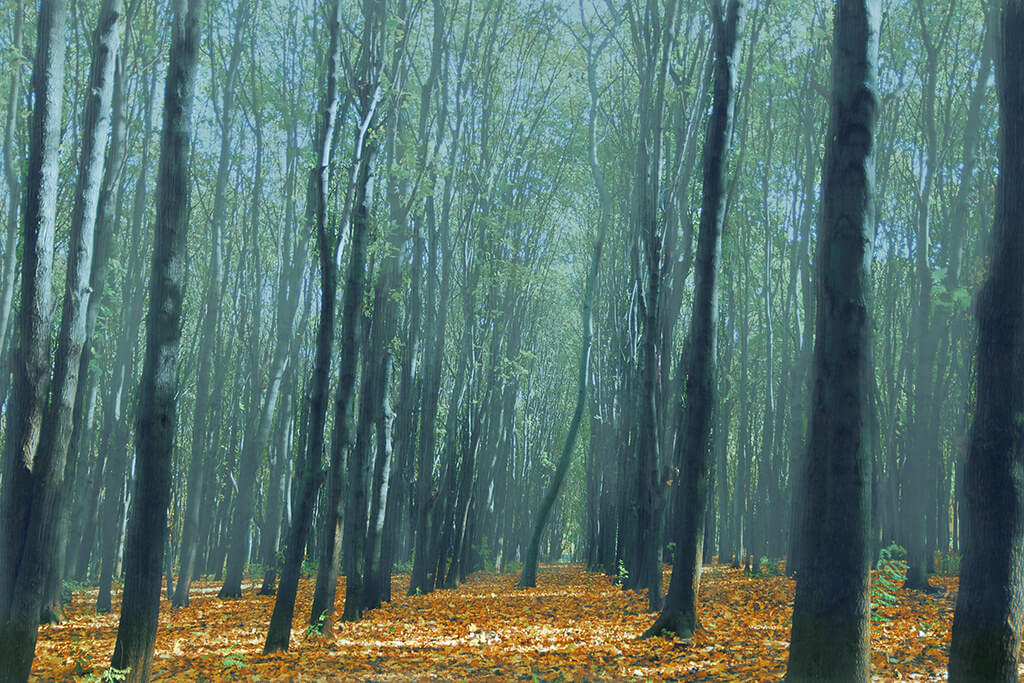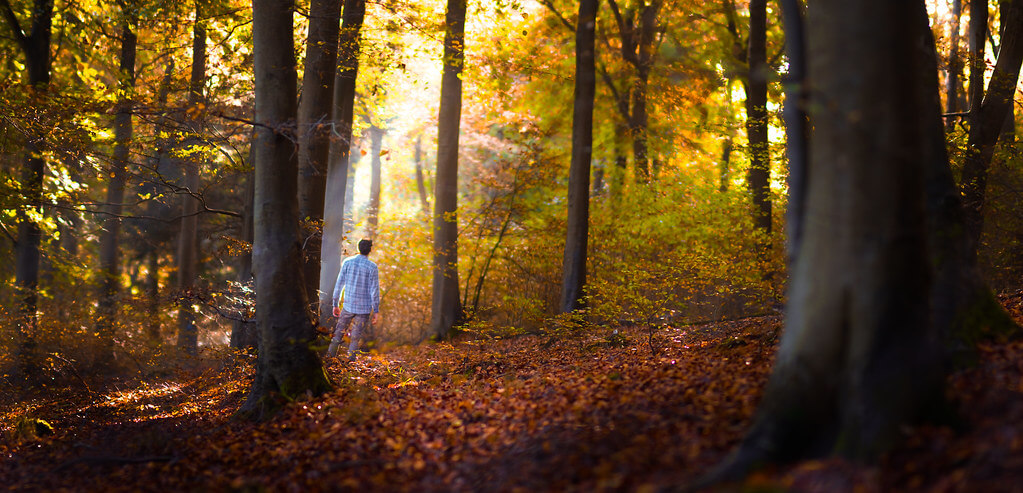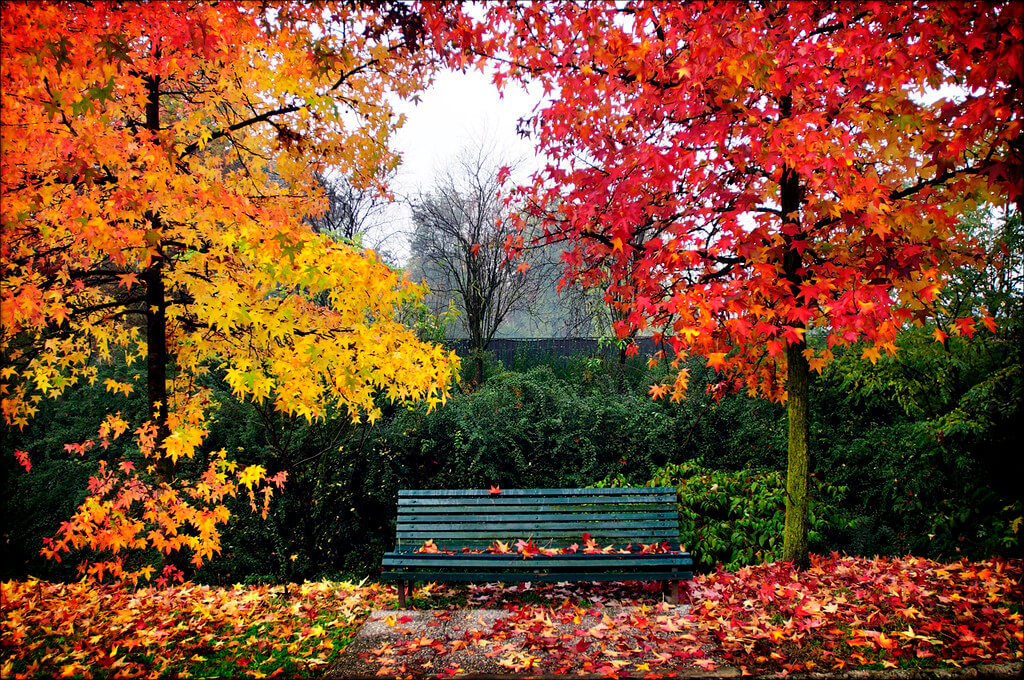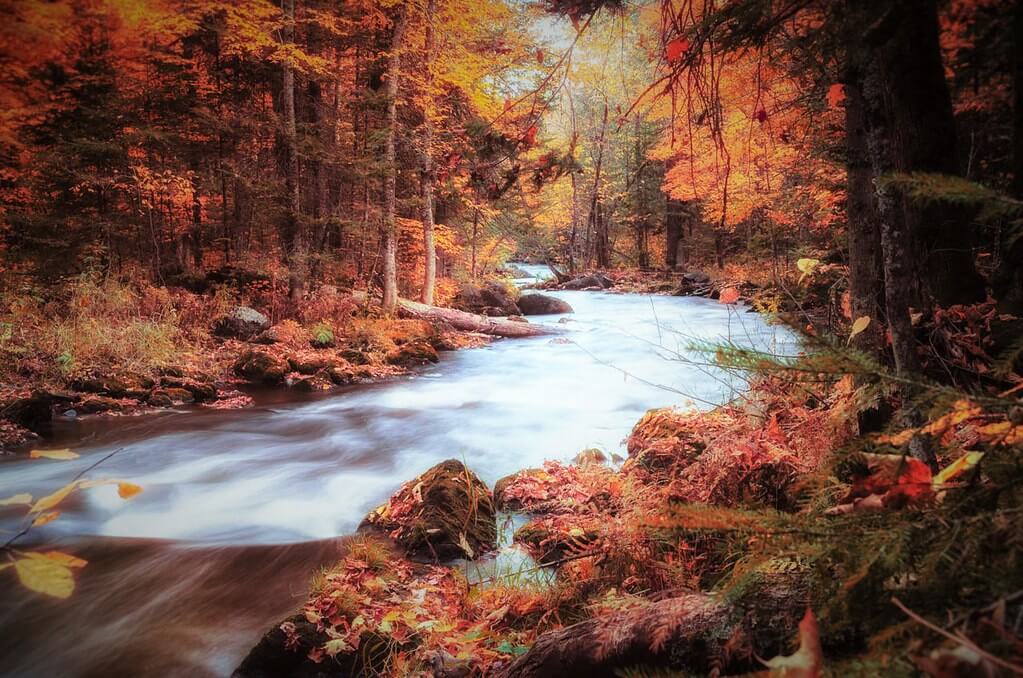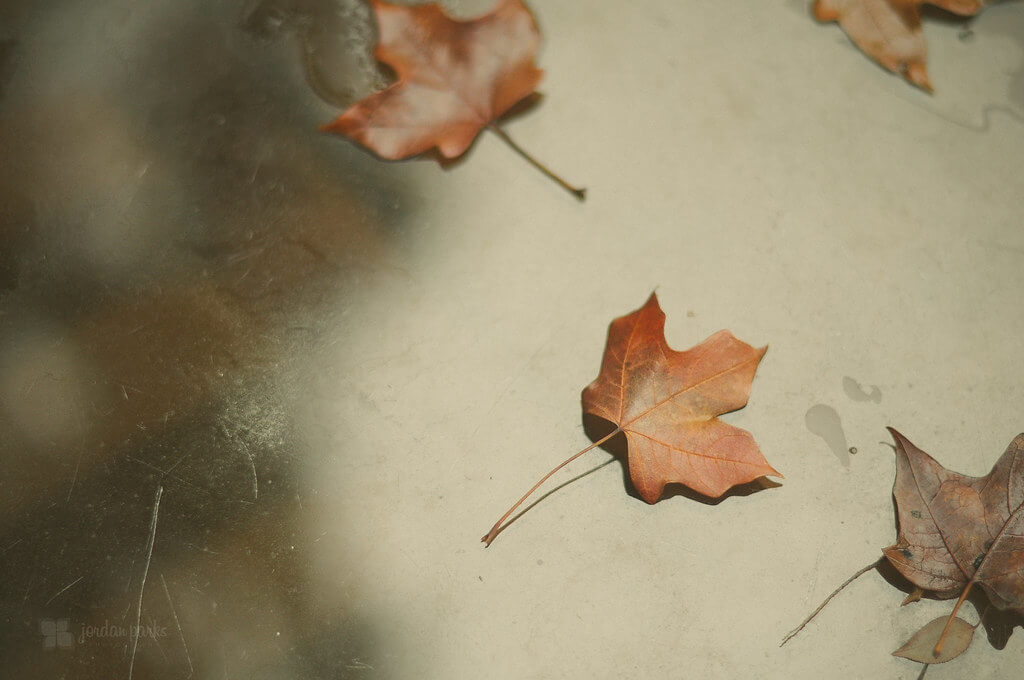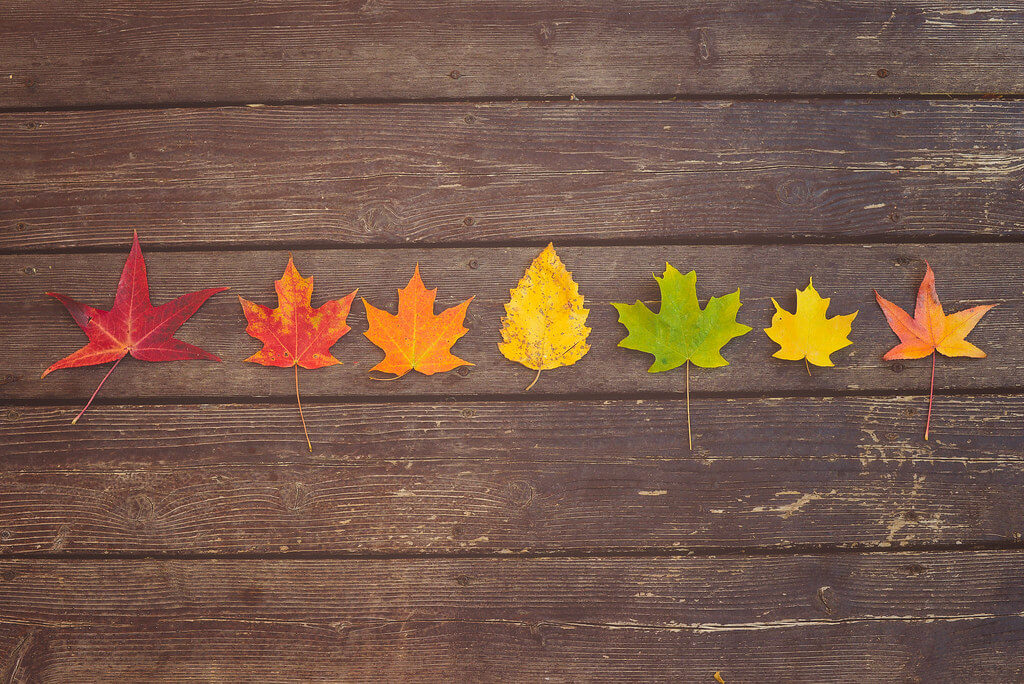Capturing the color of autumn is a unique window of opportunity for any photographer. Vibrant colors can transform an otherwise mundane scene into a blanket of red, yellow, and orange hues. So how can you take advantage of this breathtaking season? There are many things you can do to set your images apart from simple snapshots – some are easy, while others a bit more advanced. Below you’ll find a detailed guide to photographing autumn foliage, covering everything from light to composition, as well as a few other helpful tips which will improve your fall foliage techniques this season.
Know Your Light
The color of autumn is a short-lived season, which means that the last thing you should do is stay indoors due to less-than-ideal weather. You can find a beautiful image with any kind of lighting. You just need to adjust how you evaluate your scene and use what you have to your advantage.
Overcast Lighting for Fall Foliage
Your lighting play a huge role on the vibrancy of color when photographing fall foliage. While many don’t consider an overcast day to be the best lighting for foliage photography, it’s an incredible way to capture the saturated colors of leaves. Overcast lighting has the ability to eliminate harsh shadows and highlights, bringing out those powerful tones and colors that aren’t visible under bright sunlight.
Overcast lighting is not just for daytime, either. The blue hour (that small window after sunset or before sunrise) can add a stunning blue/purple hue to fall foliage, along with the benefits of overcast lighting.
You should also know that wet leaves are much more vibrant than those drying in the sun. This, combined with overcast lighting, can provide you with some serious color.
swapnil deshpande – A graceful exit
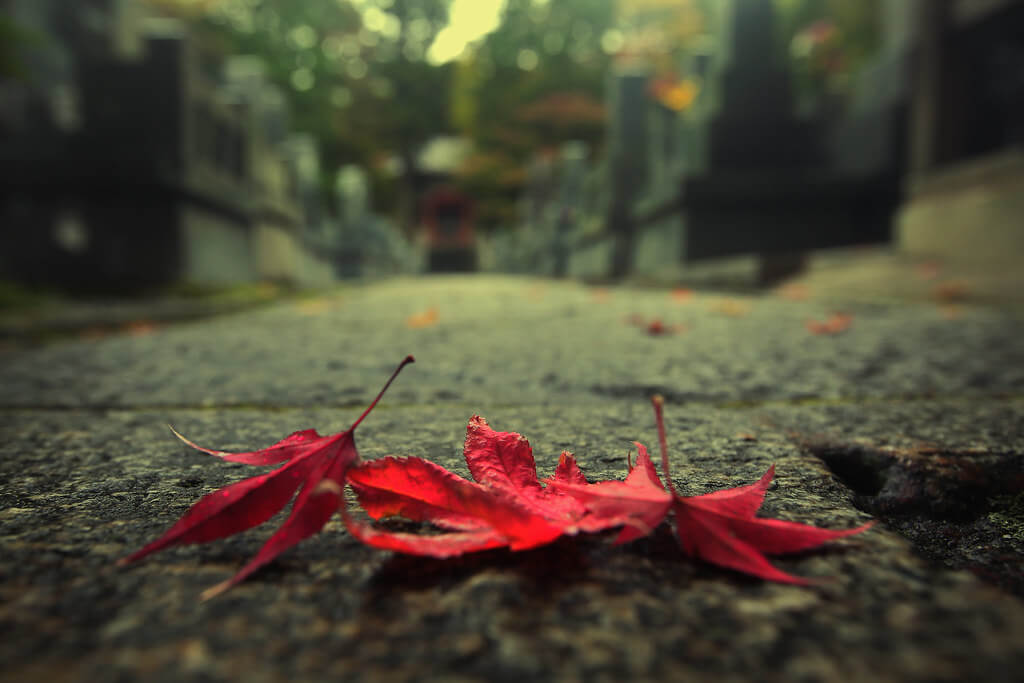
Sunlight with Fall Foliage
With the right technique and composition, sunlight can have a beautiful effect on autumn colors. The direct lighting will increase shadows and highlights, expanding the tonal range and drama of an image. In particular, the golden hour can flood your lens with rays of sunlight, making autumn leaves look like gold.
When shooting under the sun, you’ll undoubtedly run into exposure problems, especially in the morning and evening when the angle of the sun creates more highlights and shadows. An overexposed sky, underexposed ground, or blown highlights from reflections are all common issues that you may encounter.
To rectify this, you have two main options – exposure blending or using GND filters. If you’re taking photos of landscapes, you can use either method. If not, then exposure blending in post-processing will be your best bet.
Alexander Cahlenstein – Autumn in Sweden

Using Weather
Autumn is known for its unstable and unpredictable weather. Rain, mist, and frost can show up without notice, but that doesn’t mean you can’t photograph during these conditions. Actually, many landscape photographers look forward to these pleasant surprises as they provide opportunities for unique photos.
Mist & Fog with Fall Foliage
Not only is autumn a show of color, but those cold nights allow for many misty mornings. Fog on water or thick mist in a forest can provide a stunning scene for photos.
Fotis Mavroudakis – Colorful fall path

Lenny K Photography – Lonely Autumn Path

Frost with Fall Foliage
Later in the season, autumn mornings can be laden with frost from the sudden drop in overnight temperatures. This is perfect for blue or golden hour autumn images. It’s not just the autumn leaves that look fantastic with frost – it’s the green grass and other foliage that has yet to see the harshness of freezing cold weather.
Past Peak Fall Foliage
Just because the leaves have fallen doesn’t mean you can’t capture stunning photos of foliage. The starkness of barren trees combined with color on the ground presents plenty of opportunities for creative landscapes.
As mentioned above, water has the ability to saturate the color of leaves, so wet foliage on the ground presents a particularly successful canvas. Combined with the overcast lighting of a rainy day (which also brings out vibrant colors), you’re set for a colorful autumn portfolio.
Ahmer Inam – Last Days of Fall
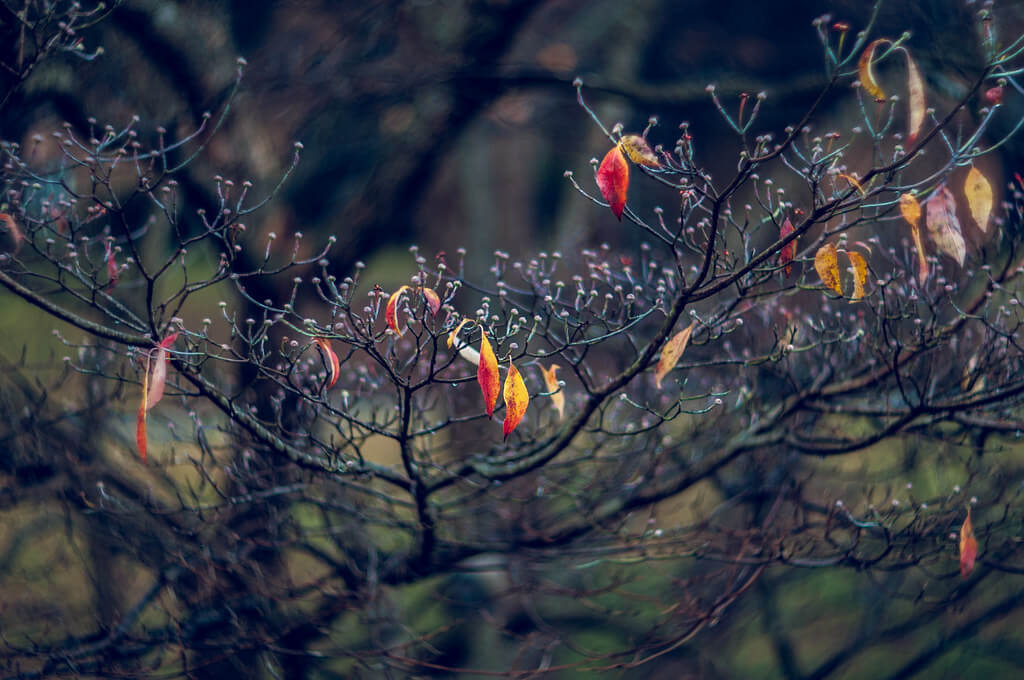
Once peak foliage arrives, it can last a while – anywhere from a week to a month, so you have plenty of time to try out different perspectives and compositions once peak arrives.
Also, it’s good to know that once leaves change color, they don’t become any more vibrant than what you already see. And once they fall, the color only lasts a couple days. So actually, your window of opportunity to photograph colorful foliage on the ground is shorter than the peak season itself.
Keep in mind that foliage can vary greatly within a short radius due to differences in elevation and the type of tree. The tops of a mountain range can be vibrant with color while the town center below has barely turned.
Autumn Techniques
Weather and light have a huge role to play in the kind of autumn images you create, but what special techniques can you use to photograph autumn in a unique and powerful way?
Panoramas
Sprawling mountain vistas are one of the most sought-after autumn photos to capture. If you’re photographing hills and mountains, you can get nice photos of autumn foliage in a panoramic stitch.
When shooting a panoramic photo, there’s a set of rules you need to follow to make sure your images can be stitched together correctly. This includes using your manual settings, locking your focus, etc. For more information on how to shoot panoramas, follow this tutorial from Photography Pro.
Mountains aren’t the only subjects that can look awesome in a panoramic photo. Forests, too, can look impressive when you show their size and grandeur in a panorama.
Polarizer Filters
Many know that a polarizer filter is a wonderful tool that reduces exposure and also deepens the saturation of colors – a huge benefit for autumn. However, what works particularly well for fall foliage is the polarizer filter’s ability to reduce glare when light is reflecting off leaves. In other words, colorful leaves that are washed out from reflections can become vibrant again, thanks to a polarizing filter.
Slowing Down Your Shutter
The colors of autumn provide a wonderful opportunity to get creative with your camera. By using a slow shutter speed, you can capture movement in a surreal and powerful way. Falling leaves or tree branches with colorful leaves, swaying in the wind, are both excellent opportunities to use a slow shutter speed and get a bit artistic. Don’t forget about moving water, either!
During daylight hours, you’ll often need to slow down your shutter tremendously in order to capture movement like this. Using a small aperture generally won’t cut it. Instead, you’ll need to use ND filters of varying strength depending on how slow you want your shutter to be. Don’t be afraid to stack your filters either for very long exposures. Just watch out for any unwanted vignetting.
And of course – don’t forget to lock your mirror, mount on a sturdy tripod, and use your remote cable release.
Autumn Bokeh
If you have a fast lens, autumn is the perfect time to use a wide aperture to create some outstanding bokeh images. You can photograph bokeh in practically any situation, but autumn is unique. The colorful leaves can create a mosaic of shapes and tones, and they also makes a fantastic backdrop for an outdoor portrait session.
Yane Naumoski – Day 307: Stairway to Autumn
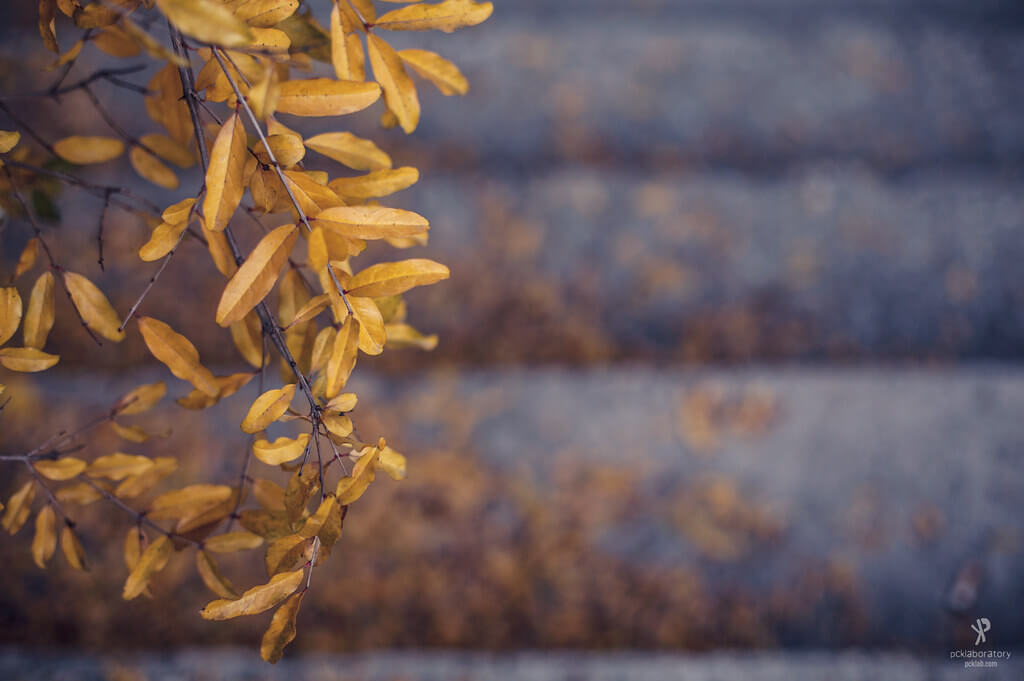
Composing Your Autumn Photo
While autumn photographs of a sprawling mountain side can be breathtaking, they’re not the only images you can capture. Autumn color is a short-lived season where every style of photography can come into play.
Focus on Simplicity
Minimalism can be as powerful as a grand autumn vista. Isolated trees, leaves, and macro shots are often ignored in the quest to capture a more complex photograph, but in fact, some of the most powerful shots have minimalist compositions.
Besides changing your composition, you can also isolate subjects using a wide aperture. This is a great technique to employ when your photography is confined to a small area. Make sure to bring along a fast lens, such as the 50mm f/1.8. This will give you some incredibly sharp isolation, allowing you to find a scene to capture even in the most unlikely areas.
Gabriel Caparó – Colors of Fate
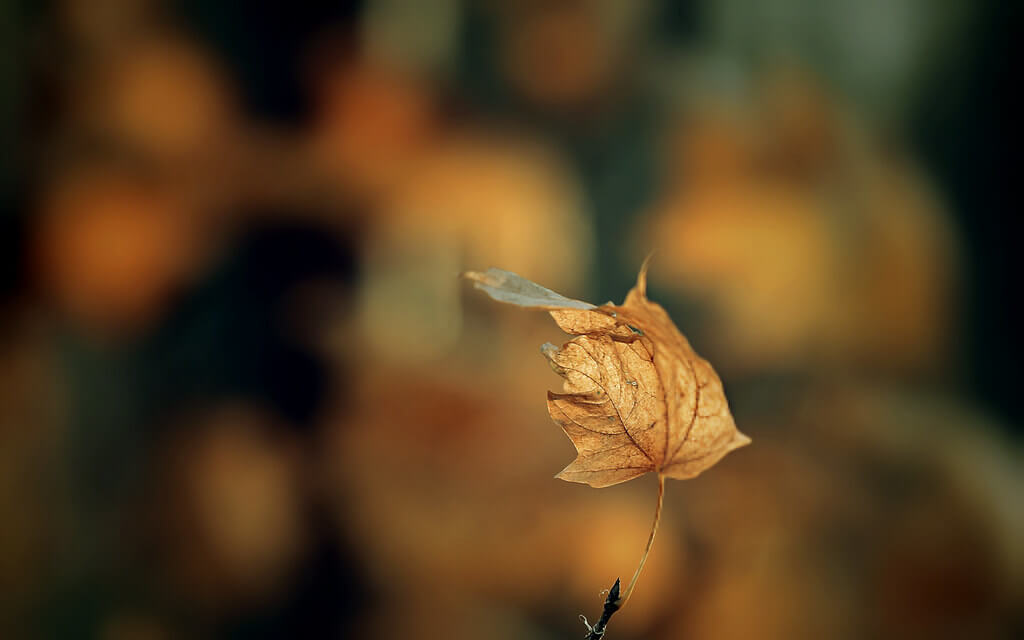
Change Your Perspective
Sometimes the simplest way to improve your autumn photography is the most successful. Changing your vantage point from eye-level to up high or down low can provide a unique perspective that many do not expect.
Yane Naumoski – Day 294: Autumn dance
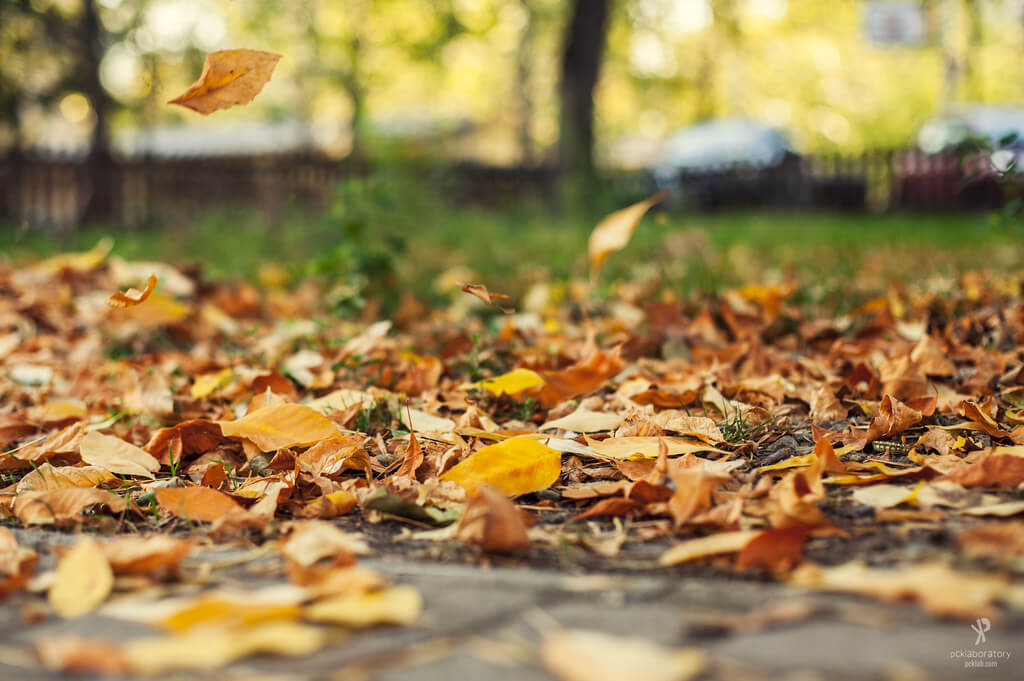
Al Gieryna – Knowing trees, I understand the meaning of patience.
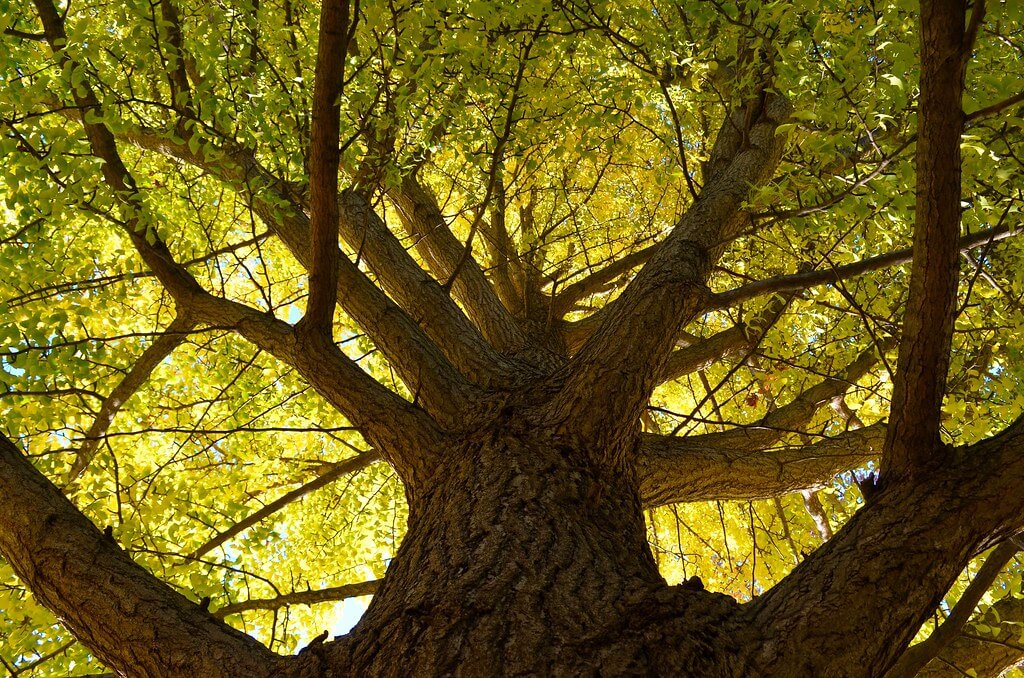
Hijack Some Foliage
One of the great aspects of autumn is that you can take the foliage wherever you go – or at least a small part of it. By positioning a leaf or two in a unique way, you can completely transform an otherwise bland composition by offering a strong focal point. This works especially well with wide-angle lenses. (The Sigma 10-20mm is one of my favorites).
Theo Crazzolara – Flowing Autumn
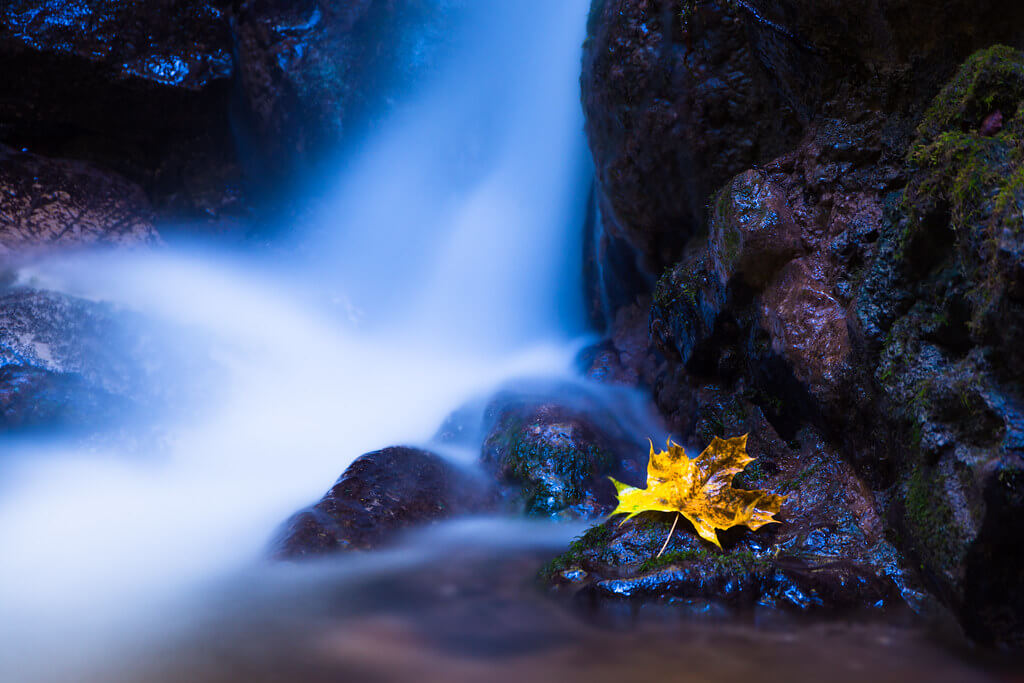
If you’re traveling to New England to photograph fall foliage – which many do – then the Yankee Magazine fall foliage report is the “it” place to follow for constant updates.
Even if you won’t be in the New England area this fall, the Yankee foliage blog is a great resource to follow as it gives you insider information on how the weather affects foliage, written from the perspective of a landscape/nature photographer.
The autumn season is too short to afford a missed photo opportunity. Clouds, sun, day, night – you can always find a stunning composition to capture, whether you’re looking at a beautiful mountain vista or the confinement of your backyard.
For more fall foliage inspiration, make sure to check out our collection of autumn images to help start planning your autumn photo shoot.
